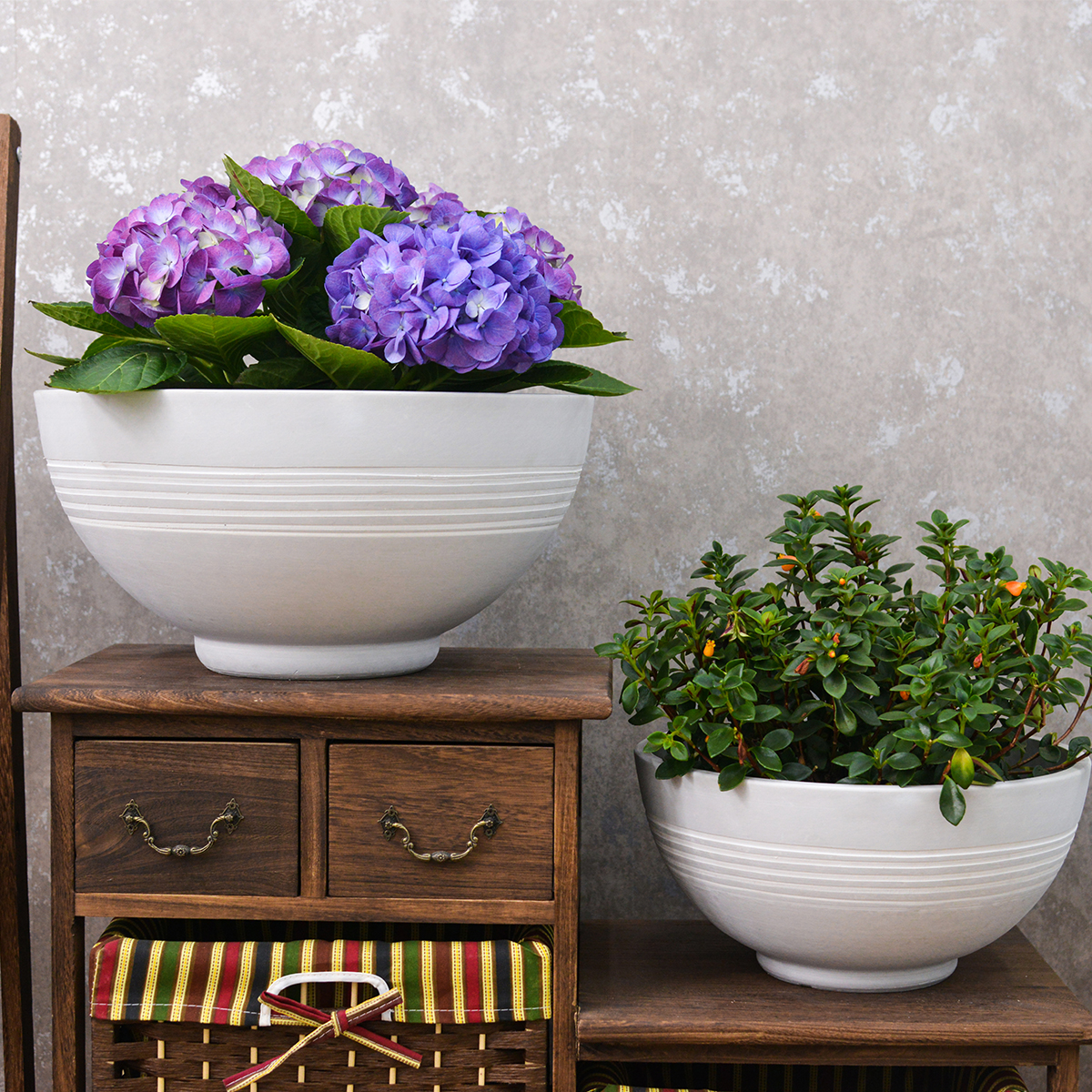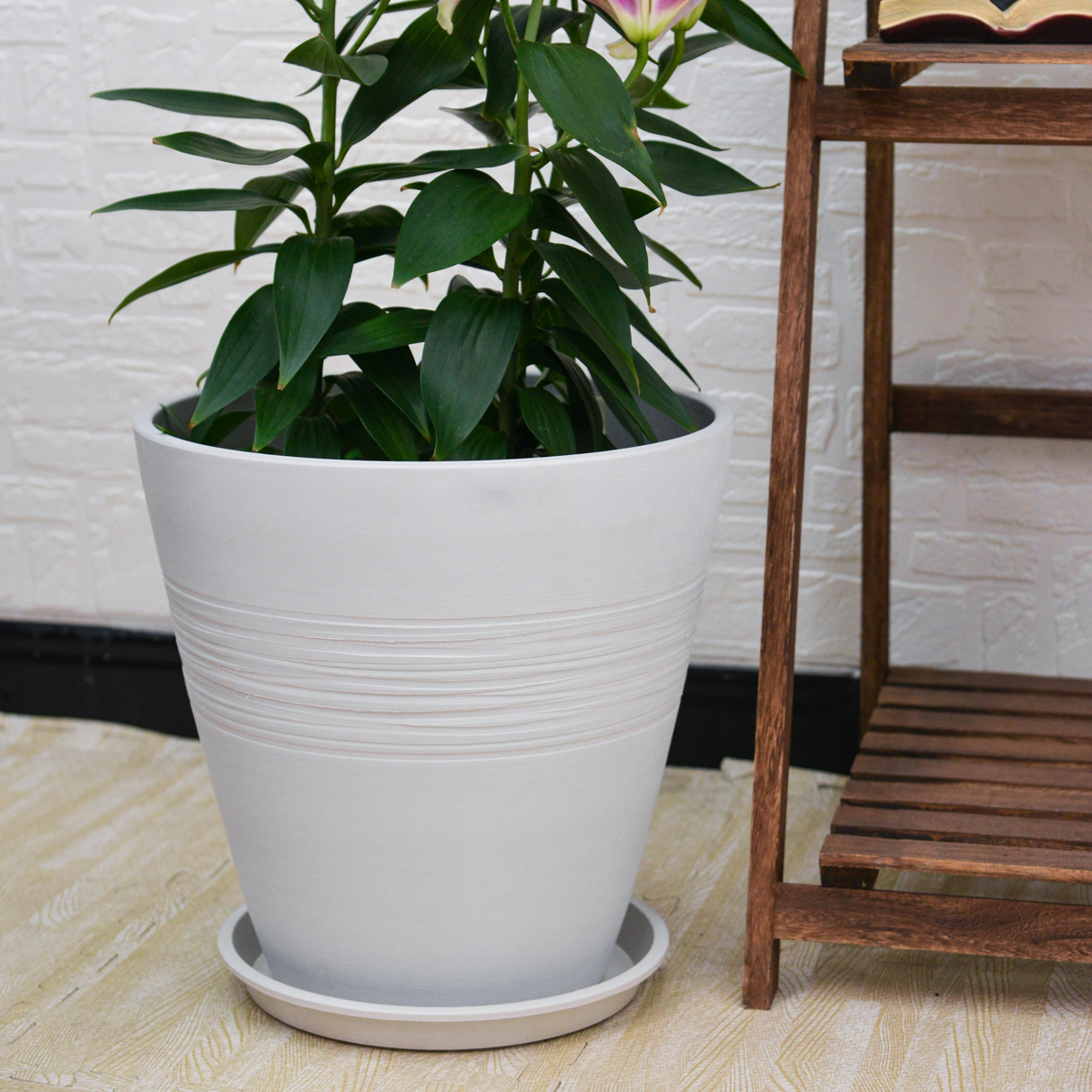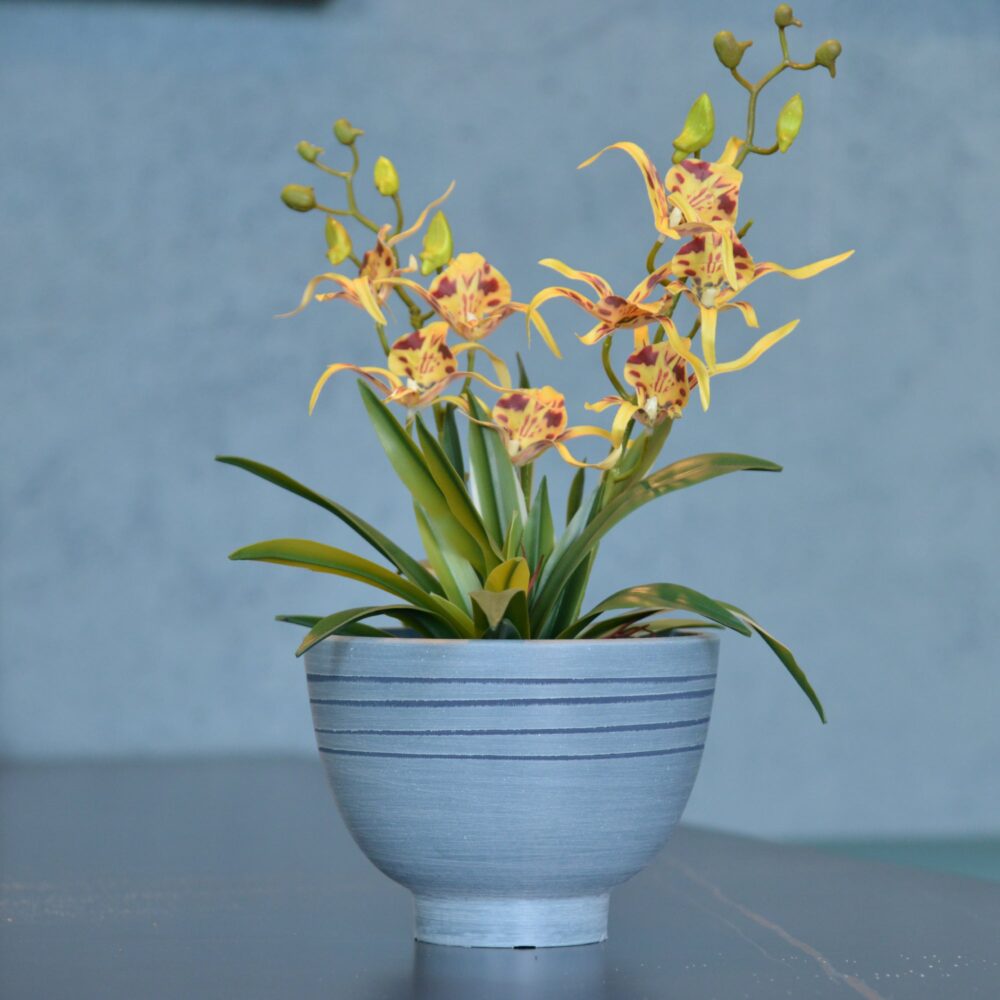Polkadot Begonia Indoors: The Complete Guide to Growing Begonia Maculata at Home
Looking to add a touch of striking foliage and unique patterns to your indoor plant collection? Polkadot Begonia, scientifically known as Begonia maculata, is a captivating cane-like begonia prized for its angel-wing shaped leaves adorned with distinctive silver polka dots. These stylish and relatively easy-to-grow begonias, native to Brazil, are perfect for adding a touch of modern flair and visual interest to your indoor spaces. This comprehensive guide will provide you with everything you need to know to grow Begonia maculata indoors, from selecting the right plant and pot to mastering essential care techniques for a thriving and beautifully patterned Polkadot Begonia in your home.
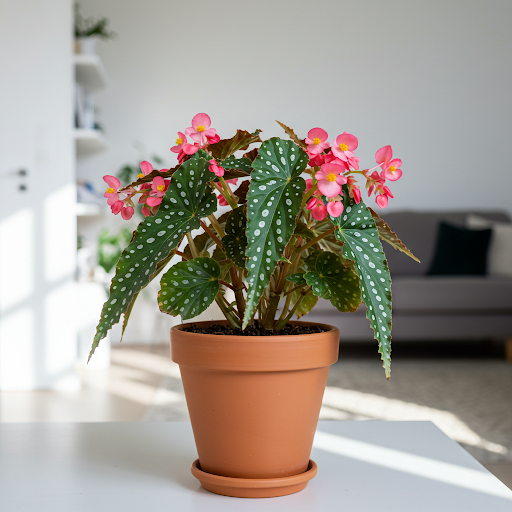
Polkadot Begonia
What is Polkadot Begonia (Begonia maculata)?
Begonia maculata, commonly known as Polkadot Begonia, Spotted Begonia, or Trout Begonia, is a popular species of cane-like begonia celebrated for its ornamental foliage. Begonia maculata is known for its striking, angel-wing shaped leaves that are dark green on the upper surface with prominent silver or white polka dots, and a deep red or burgundy underside. The contrast between the spotted upper surface and the red underside is a key characteristic. It produces clusters of delicate white or pink flowers in the late winter or early spring, though it is primarily grown for its foliage.Polkadot Begonias are known for their upright, cane-like growth habit, striking leaf patterns, and relative ease of care, making them a fashionable and rewarding houseplant.
Can Polkadot Begonias (Begonia maculata) Thrive Indoors?
Yes, Polkadot Begonias (Begonia maculata) thrive exceptionally well indoors and are perfectly suited for indoor conditions. Their preference for bright, indirect light, moderate humidity, and well-draining soil aligns well with typical indoor environments. With proper care, they will reward you with stunning foliage and occasional delicate blooms, enhancing the style and vibrancy of your home.
Ideal Indoor Growing Conditions for Polkadot Begonias (Begonia maculata):
- Varieties of Polkadot Begonia (Begonia maculata): While Begonia maculata is the primary species, there are several cultivars and hybrids that offer variations in leaf patterns, size, and flower color. Popular indoor Polkadot Begonia varieties include:
- *Begonia maculata ‘Wightii’: The most common and classic form, with prominent silver spots on dark green leaves and red undersides.
- *Begonia maculata ‘Tamaya’: A more compact variety, good for smaller spaces.
- *Begonia maculata ‘Argenteoguttata’: An older name often used interchangeably with Begonia maculataor referring to similar spotted forms.
- *Begonia ‘Lucerna’: A hybrid descended from Begonia maculata, larger and more vigorous, with silver spots and pink flowers.
- Light: Polkadot Begonias thrive in bright, indirect light. They need bright light to maintain their vibrant leaf color and spotting. East-facing windows are often ideal, providing gentle morning sun. West or south-facing windows can work if the light is filtered through sheer curtains or if the plant is placed slightly away from the window to avoid intense afternoon sun. Insufficient light can cause the spots to become less pronounced and the plant to become leggy. Avoid direct, intense sunlight, which can scorch the leaves.
- Soil: Polkadot Begonias need well-draining soil that retains moisture. Use a high-quality potting mix formulated for begonias, African violets, or a general-purpose potting mix amended with perlite and peat moss to improve drainage, aeration, and moisture retention. The soil should be slightly acidic to neutral.
- Watering: Polkadot Begonias prefer consistently moist soil during the growing season (spring and summer) and slightly drier soil in fall and winter. Water when the top inch of soil just begins to feel slightly dry. Water thoroughly until water drains out of the drainage holes. Allow the soil to slightly dry out between waterings, but do not let it dry out completely for extended periods, especially during active growth. Avoid overwatering and soggy soil, which can lead to root rot. Reduce watering in fall and winter when growth slows down. Watering frequency will vary depending on light levels, temperature, humidity, and pot size. Check soil moisture regularly. Use room temperature water.
- Temperature: Average room temperatures between 65°F to 75°F (18°C to 24°C) are ideal. Polkadot Begonias are comfortable in typical household temperatures. Avoid exposing them to temperatures below 55°F (13°C) or sudden temperature fluctuations and cold drafts. They prefer moderate warmth and consistent temperatures.
- Humidity: Polkadot Begonias prefer moderate to high humidity, ideally around 50-60% or higher. They appreciate humidity, which helps maintain healthy foliage and vibrant colors. Dry air can lead to crispy leaf edges. Increase humidity by:
- Pebble Trays: Place pots on trays filled with pebbles and water (water level below the pot base).
- Humidifier: Use a room humidifier, especially during dry seasons or winter heating.
- Grouping Plants: Grouping Polkadot Begonias with other humidity-loving plants can create a more humid microclimate.
- Terrariums (Open or Partially Closed): Polkadot Begonias can thrive in open or partially closed terrariums, which help maintain humidity.
- Misting (with caution): Misting the air around the plant can temporarily increase humidity, but avoid excessive misting directly on the leaves, as this can sometimes encourage fungal issues.
Planting Your Polkadot Begonia (Begonia maculata) Indoors:
- Starting from Cuttings or Potted Plants: The easiest way to start growing Polkadot Begonias indoors is to purchase established potted plants from nurseries, garden centers, or online retailers specializing in begonias. They are also easily propagated from stem cuttings.
- Propagation from Stem Cuttings: Take stem cuttings (several inches long) with at least one node (leaf joint).Remove lower leaves and place the cutting in water or directly into moist potting mix. Rooting typically occurs relatively easily within a few weeks. Stem cuttings root readily in water or directly in soil.
- Planting Time: Polkadot Begonias can be planted or repotted at any time of year indoors, but spring or early summer, at the start of the growing season, is generally recommended for optimal establishment and growth.
Choosing the Right Pots for Indoor Polkadot Begonias (Begonia maculata):
- Suitable Pot Types: Select pots with good drainage and aeration. Terracotta pots, ceramic pots, or plastic pots are all suitable. Terracotta pots are often favored as they are porous and help the soil dry out slightly, which begonias appreciate. Ensure good drainage regardless of pot material.
- Drainage: Drainage is essential for Polkadot Begonias to prevent root rot. Ensure your chosen pot has drainage holes at the bottom. You can also add a layer of gravel or pot shards at the base of the pot to improve drainage slightly.
- Pot Size: Choose a pot that is appropriately sized for the current size of the plant and allows for some growth. Polkadot Begonias have moderate root systems. Select pots that are not excessively large. For smaller plants, start with pots that are 4-6 inches in diameter. Mature Polkadot Begonias may need pots 6-8 inches or slightly largerin diameter. Avoid overpotting.
- Potting Mix: Use a moist, well-draining potting mix as described earlier.
Essential Care Tips for a Thriving Indoor Polkadot Begonia (Begonia maculata):
- Watering Schedule: “Keep Soil Moist, Allow Top to Slightly Dry”. Water when the top inch of soil is slightly dry. Allow the soil to slightly dry out between waterings, especially in fall and winter. Avoid overwatering and soggy soil.
- Light Management: Bright Indirect Light is Key for Spots. Provide bright, indirect light to maintain vibrant leaf color and spotting. Avoid direct sun.
- Humidity is Beneficial: Maintain moderate to high humidity for optimal foliage health and color. Pebble trays, humidifiers, or grouping plants are beneficial, especially in dry indoor air.
- Fertilizing: Regular Feeding During Growing Season. Polkadot Begonias are moderate feeders and benefit from regular fertilization during the growing season (spring and summer) to support their growth and flowering. Fertilize every 2-4 weeks during the growing season with a balanced liquid fertilizer diluted to half strength or a fertilizer specifically formulated for begonias or flowering houseplants. Follow package instructions carefully. Reduce or stop fertilizing during the fall and winter dormant period.
- Pinching and Pruning: Pinching back the tips of stems can encourage bushier growth. Prune back leggy stems in spring to maintain shape. Remove any dead or damaged leaves or stems promptly.
- Staking (May be Needed): As Polkadot Begonias grow taller, they may become leggy or top-heavy. Provide support with stakes or trellises if needed to keep stems upright and prevent them from bending or breaking.
- Repotting Schedule: Repot Polkadot Begonias every 1-2 years, or when they become root-bound or the potting mix is depleted. Repot in spring or early summer. Repotting into fresh potting mix is beneficial for their continued health.
- Pest and Disease Control: Monitor Polkadot Begonias for pests like mealybugs, aphids, spider mites, and whiteflies. Begonias can be susceptible to powdery mildew, especially in humid conditions with poor air circulation. Ensure good air circulation and avoid overcrowding. Root rot can occur if overwatered. Ensure proper drainage and avoid overwatering to prevent root rot and fungal diseases. Treat any pest infestations promptly with insecticidal soap or neem oil. For powdery mildew, improve air circulation and use a fungicide if necessary.
Popular Polkadot Begonia Cultivars and Hybrids:
- *Begonia maculata ‘Wightii’ (Classic Polkadot Begonia)
- *Begonia maculata ‘Tamaya’ (Compact Form)
- *Begonia ‘Lucerna’ (Larger Hybrid with Pink Flowers)
- Numerous other Begonia hybrids and cultivars with spotted foliage are available, explore local nurseries for unique selections.
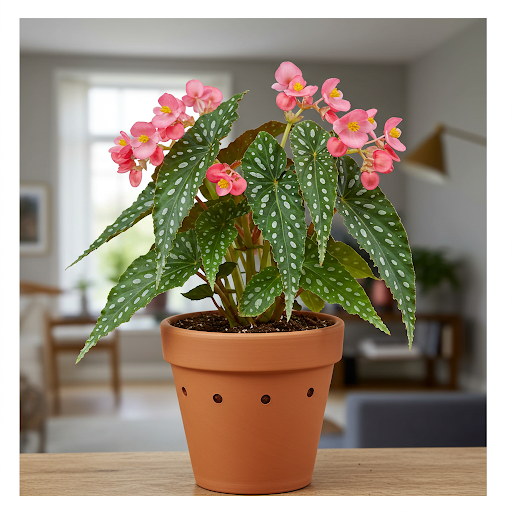
Polkadot Begonia
In Summary:
Growing Polkadot Begonias (Begonia maculata) indoors is a rewarding way to bring striking foliage, unique patterns, and a touch of modern elegance to your home. Their distinctive spotted leaves and relatively easy care make them fashionable and long-lasting houseplants. By providing bright, indirect light, consistently moist soil (but not soggy), moderate to high humidity, regular fertilization during the growing season, and well-draining pots, you can easily cultivate thriving and beautifully patterned Polkadot Begonias indoors and enjoy their visual appeal year after year.
For more detailed botanical information and to explore the diversity of the Begonia genus, you can visit the Wikipedia page on Begonia.
Important Note: Begonias, including Begonia maculata, are considered toxic if ingested by humans and pets due to soluble oxalates. Keep them out of reach of children and pets who may be tempted to chew on the leaves or stems. The sap can also be mildly irritating to skin in some individuals, so wash hands after handling.
20T
By greenship|2024-08-13T06:42:22+00:00August 13, 2024|Categories: Hand-carving Series|
Modern Plant Pots with Drainage – Indoor & Outdoor Use (6″ Widths)
By greenship-seo|2025-04-10T06:29:43+00:00February 6, 2025|Categories: Hand-carving Series|Tags: Decorative Flower Pots|
KC3-09k
By greenship|2024-08-16T06:24:36+00:00August 16, 2024|Categories: Hand-carving Series|
KC2-GS
By greenship|2024-08-16T06:30:21+00:00August 16, 2024|Categories: Hand-carving Series|
8 inch/10 inch Planter Indoor Plants, 2 Pack Modern Decorative Plant Pots with Drainage Hole, Cute Bowl Shape Flower Pots
By greenship-seo|2025-04-10T08:03:42+00:00January 9, 2025|Categories: Hand-carving Series|Tags: Decorative Flower Pots, Self-Watering Pots|
Planter 6 in W / 8 in W / 12 in W Indoor or Outdoor Plants, Modern Decorative Plant Pots with Drainage Hole, Decorative Flower Pots
By greenship-seo|2025-02-06T13:43:53+00:00January 16, 2025|Categories: Hand-carving Series|Tags: Decorative Flower Pots|



